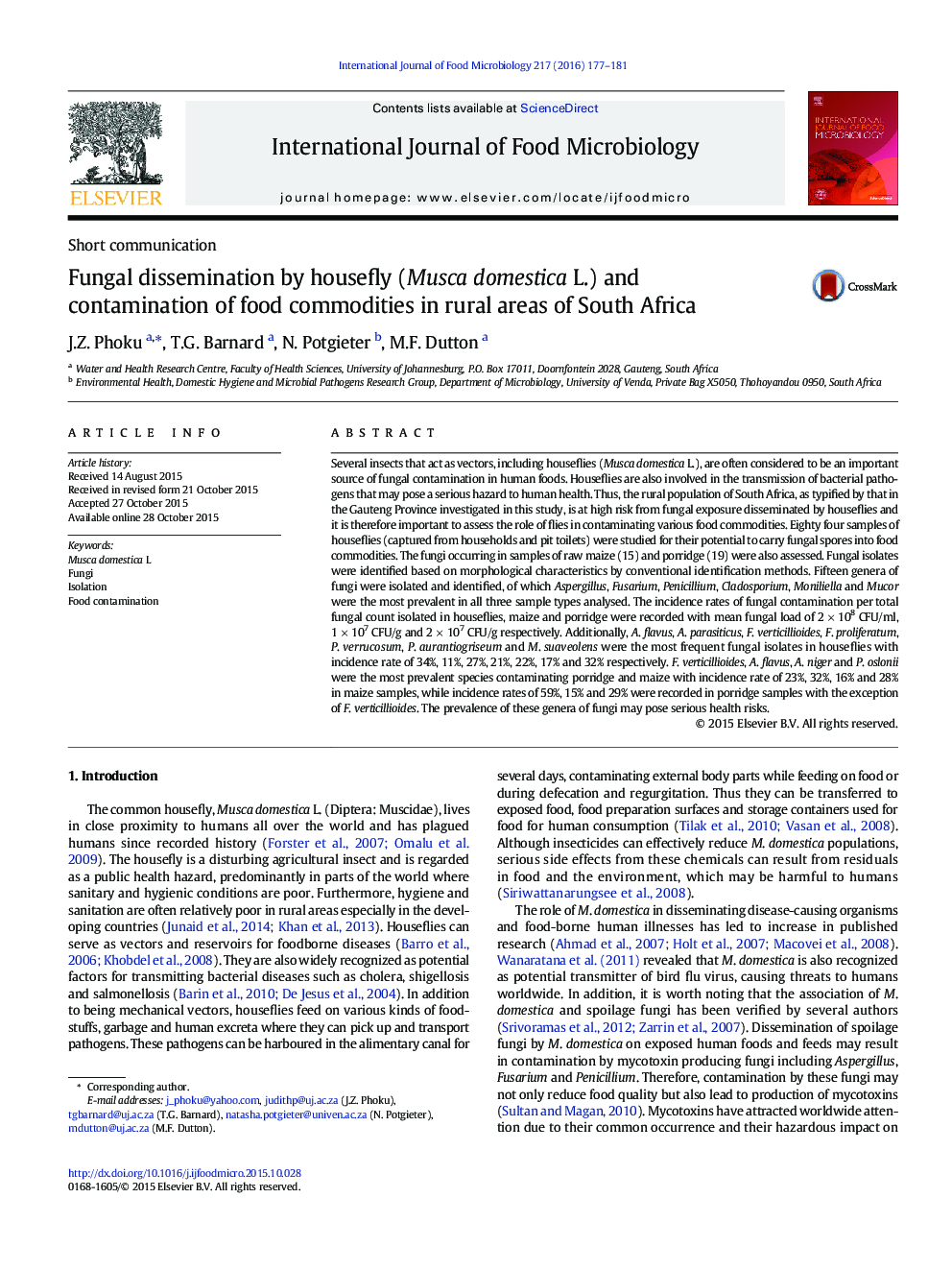| کد مقاله | کد نشریه | سال انتشار | مقاله انگلیسی | نسخه تمام متن |
|---|---|---|---|---|
| 4366415 | 1616566 | 2016 | 5 صفحه PDF | دانلود رایگان |

• Houseflies are vectors of mycotoxigenic fungal spores.
• Houseflies play a role in enhancing fungal dissemination and consequently fungal contamination of food commodities.
• Mycological review revealed the similarity in the taxonomic composition of fungi in houseflies and those of food commodities.
• Recommended strategies to reduce houseflies' population.
Several insects that act as vectors, including houseflies (Musca domestica L.), are often considered to be an important source of fungal contamination in human foods. Houseflies are also involved in the transmission of bacterial pathogens that may pose a serious hazard to human health. Thus, the rural population of South Africa, as typified by that in the Gauteng Province investigated in this study, is at high risk from fungal exposure disseminated by houseflies and it is therefore important to assess the role of flies in contaminating various food commodities. Eighty four samples of houseflies (captured from households and pit toilets) were studied for their potential to carry fungal spores into food commodities. The fungi occurring in samples of raw maize (15) and porridge (19) were also assessed. Fungal isolates were identified based on morphological characteristics by conventional identification methods. Fifteen genera of fungi were isolated and identified, of which Aspergillus, Fusarium, Penicillium, Cladosporium, Moniliella and Mucor were the most prevalent in all three sample types analysed. The incidence rates of fungal contamination per total fungal count isolated in houseflies, maize and porridge were recorded with mean fungal load of 2 × 108 CFU/ml, 1 × 107 CFU/g and 2 × 107 CFU/g respectively. Additionally, A. flavus, A. parasiticus, F. verticillioides, F. proliferatum, P. verrucosum, P. aurantiogriseum and M. suaveolens were the most frequent fungal isolates in houseflies with incidence rate of 34%, 11%, 27%, 21%, 22%, 17% and 32% respectively. F. verticillioides, A. flavus, A. niger and P. oslonii were the most prevalent species contaminating porridge and maize with incidence rate of 23%, 32%, 16% and 28% in maize samples, while incidence rates of 59%, 15% and 29% were recorded in porridge samples with the exception of F. verticillioides. The prevalence of these genera of fungi may pose serious health risks.
Journal: International Journal of Food Microbiology - Volume 217, 18 January 2016, Pages 177–181